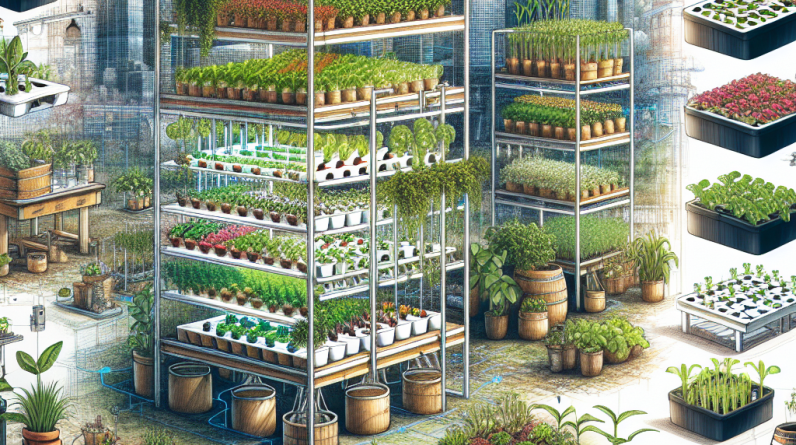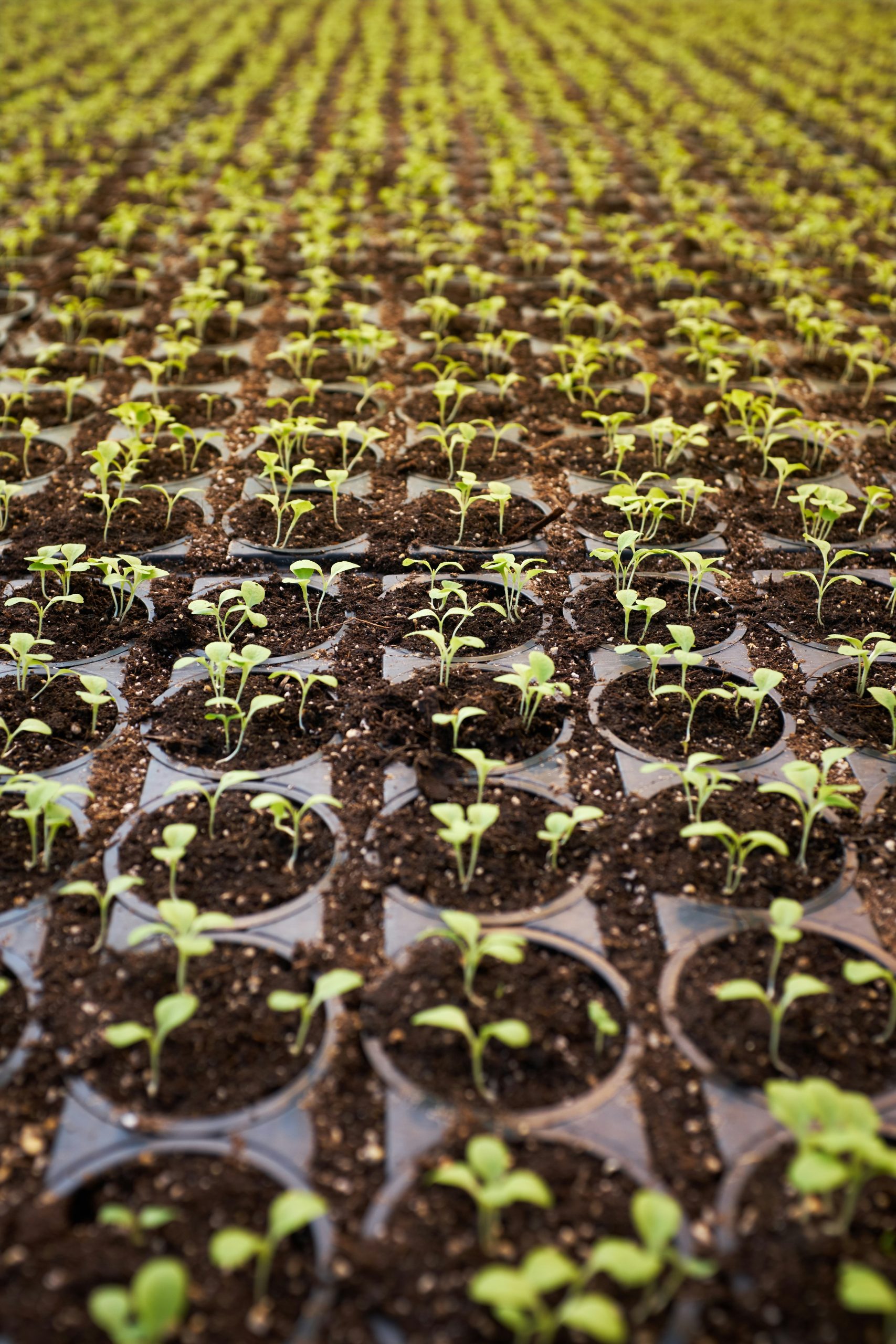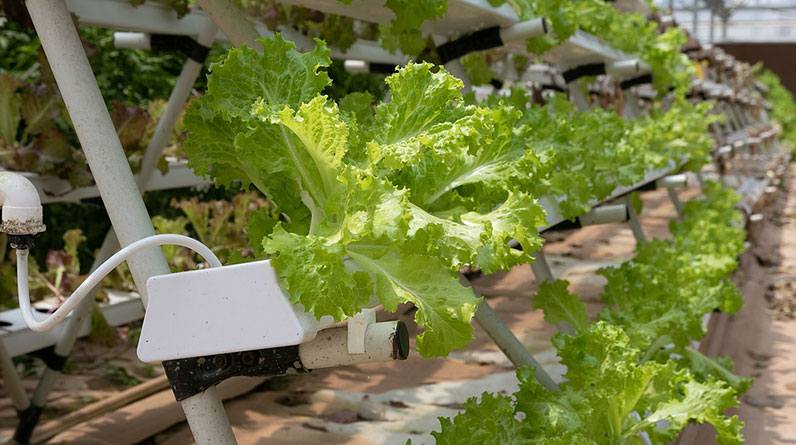
Choose the Right Hydroponic System
Understanding the Hydroponic Methods
When I first ventured into hydroponic gardening, it was like entering a new world full of possibilities. There are various systems out there, such as Nutrient Film Techniques (NFT), Deep Water Culture (DWC), or even Ebb and Flow. Each system has its pros and cons, but for cucumbers, I find that DWC works fabulously due to its ability to provide ample oxygen to the roots.
In my experience, cucumber plants, which can be a little demanding, thrive best in environments where they have consistent access to nutrients and moisture. Therefore, choosing the right system tailored to their specific needs can make a world of difference in your produce quality.
So, if you’re just starting, I highly recommend diving into a DWC setup. It’s relatively easy to manage, and trust me, your cucumbers will thank you with an abundant harvest!
Finding the Perfect Location
Once you’ve settled on the hydroponic system, finding the right spot for it is crucial. Cucumbers love sunshine; it’s like their go-to mood booster! Ideally, you want a location that gets at least 6-8 hours of direct sunlight daily.
I decided to place my hydroponic setup near a large south-facing window, which has worked wonders. However, if you’re doing this indoors and natural light isn’t an option, don’t fret! I’ve also had success using grow lights that simulate natural sunlight—just make sure they’re hung at the right distance to prevent scorching the plants.
Additionally, think about airflow. Adequate ventilation keeps those pesky mold and pest problems at bay. A little gentle breeze can work miracles in keeping your cucumber plants happy and healthy!
Setting Up Your Reservoir
Your reservoir is essentially the heart of your hydroponic system; it’s where all the nutrient-rich water lives. After having my initial hiccups, I learned the importance of keeping the right pH balance (aiming for around 5.5 to 6.5). This can heavily influence how well your cucumbers grow.
I also found it helpful to mix nutrients specifically formulated for leafy crops. Cucumbers thrive on a balance of nitrogen, phosphorus, and potassium. I combine liquid nutrients with water in my reservoir, making sure to stir well—for a uniform distribution.
Finally, I always monitor my water level, topping it off regularly since cucumbers enjoy their roots submerged. You don’t want them to dry out, trust me!
Choosing the Right Cucumber Variety
Know Your Varieties
Picking the right cucumber variety, y’all, is half the battle won. You can find cucumbers categorized as slicing, pickling, or even seedless types. Personally, I love growing cucumber varieties like ‘Marketmore 76’ or ‘English Cucumbers’ that yield crisp textures and refreshing flavors.
Each type holds its unique charm, whether you’re excited about munching on fresh salads or crafting homemade pickles. Research the growth habits of each variety before planting, as some can grow quite unruly—trust me, you don’t want to be wrestling with your plants!
And just a tip, if you’re new to hydroponics, stick with the easier varieties. They tend to be more forgiving, which is perfect for my fellow beginner gardeners out there.
Starting from Seeds vs. Seedlings
I’ve tried both starting my cucumbers from seeds and using seedlings, and I’ll tell you, each has its perks. Starting from seeds can be super rewarding; however, it requires a bit more patience. Watching those tiny sprouts emerge is satisfying!
On the other hand, purchasing seedlings can jumpstart your garden and reduce the time to harvest. After all, who wouldn’t want to see some luscious cucumbers sooner?
Ultimately, decide based on your gardening style. If you thrive on instant gratification, go for those seedlings. If you enjoy nurturing every stage, grab some seeds and get your hands a little dirty!
Planting Techniques
This part is where the magic happens! When planting, I usually place my seeds or seedlings at least a foot apart. Think of them having their personal bubble! If they’re too close, they start competing for nutrients—and nobody wants that.
I also support my cucumbers as they grow, especially if you’re using the vining varieties. Setting up a trellis has worked wonders for me. Not only does it save space, but it also keeps the fruits off the ground, making them less susceptible to pests and diseases.
Lastly, I always keep an eye on how they’re developing, ensuring they have enough space and resources to spread out. When they thrive, they’ll reward you with those delicious, crunchy cucumbers you’re after!
Caring for Your Hydroponic Cucumbers
Regular Maintenance
Keeping a consistent checking schedule has been essential in my hydroponic journey. Regular maintenance involves observing the plants, examining nutrient levels, and ensuring the water quality is tip-top. It might sound tedious, but little actions lead to massive rewards later!
Whenever I notice leaves changing color or wilting, I immediately check the pH levels and nutrient solution. How quickly you respond can make a huge difference in preserving your harvest.
And don’t neglect to prune! I often prune the lower leaves of the plants to enhance air circulation and prevent disease, which can be a game-changer in your yield.
Watering and Nutrient Management
Staying on top of watering is key. The best part about hydroponics is that you usually don’t need to water daily; your reservoir does it for you. Just remember to routinely monitor the solution and refill as needed!
Nutrient management can sound scary, but I like to use a nutrient schedule that outlines when to add which nutrients. Following a formula helps ensure your plants have everything they need without overdosing.
Experimenting is part of the fun! I’ve found out what works best through trial and error, and I suggest taking notes so that you can replicate successful mixtures in the future.
Pest and Disease Control
Pests can be a real headache for any gardener, but there are ways to keep them in check. I love using natural pest deterrents like neem oil or insecticidal soap—it’s less harsh on my plants and the environment.
Regular inspections are essential because catching problems early makes a world of difference. Look for signs of distress, whether it’s wilting leaves or tiny bugs hiding in the corners.
Establishing a friendly insect ecosystem also goes a long way. For example, ladybugs and certain wasps can help keep your crop healthier through natural predation. I always feel good knowing I’m working with nature instead of against it!
Harvesting Your Cucumbers
Timing is Everything
Harvesting cucumbers is like picking ripe fruit; there’s a perfect moment when they hit their peak. I often feel for a firm texture and a vibrant color. If they start turning yellow, it’s a sign that they may be overripe, and we don’t want that!
Check the variety’s expected harvest duration and keep an eye on your plants in the weeks leading up to it. Early harvesting often yields crisper cucumbers, which has been my go-to strategy.
Lastly, leave a little bit of the stem attached when harvesting to prolong freshness. Trust me, those extra few days really add up when you’re ready to chow down!
Storing Fresh Produce
Once you’ve gathered a beautiful harvest, proper storage becomes important. I’ve found that wrapping cucumbers in a damp paper towel before placing them in the fridge helps maintain their crispness. They’re like little treasure chests of freshness!
Avoid washing cucumbers until just before you eat them. Water can lead to quicker spoilage, and nobody wants that for their crispy snacks. Just trust your gut instinct on when to clean them up!
When stored properly, hydroponic cucumbers can last longer than traditional garden cucumbers. You’ll end up enjoying the fruits of your labor for days to come—I’ve even had mine last up to a week!
Savoring Your Hydroponic Bounty
Once it’s time to eat, the real joy kicks in. Freshly harvested cucumbers are amazing in salads, sandwiches, or just on their own. I love tossing them in a Greek salad or even adding them to refreshing smoothies.
Beyond eating, you can try your hand at pickling too! Homemade pickles are a great way to preserve your harvest, and the flavors you can create are just out of this world. You can get creative with spices and learn what suits your taste buds!
Every bite of fresh, home-grown cucumber reminds me that all the effort is well worth it. Plus, there’s nothing like sharing your bounty with family and friends. You’ll be the superstar gardener in their eyes!
Frequently Asked Questions
1. How long does it take to grow hydroponic cucumbers?
It generally takes about 50 to 70 days from planting to harvest, depending on the variety you choose and the conditions in your hydroponic system.
2. Can I grow cucumbers all year round?
Yes, when grown indoors or in controlled environments, cucumbers can be grown year-round. Just ensure you maintain consistent light, temperature, and humidity levels.
3. Are there any specific nutrients cucumbers need?
Yes! Cucumbers thrive on a mix of nitrogen, phosphorus, and potassium. A nutrient solution specifically formulated for leafy greens often works great.
4. Can hydroponic cucumbers be affected by pests?
Absolutely. Even hydroponics isn’t pest-proof! Regular monitoring and natural pest control measures can help mitigate issues.
5. What’s the best way to ensure crisp cucumbers?
Harvest them at their peak ripeness, store them properly, and avoid washing until right before eating. Keeping them cool in the fridge is essential too!







